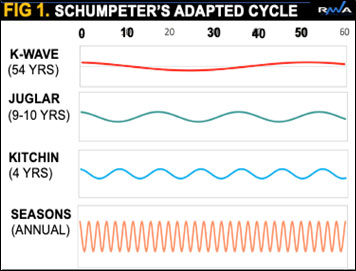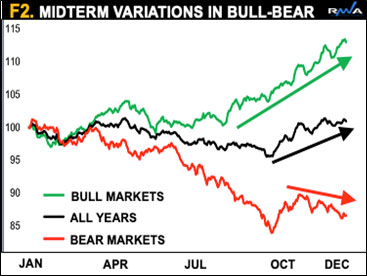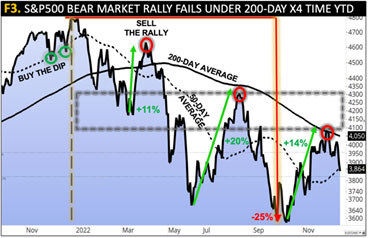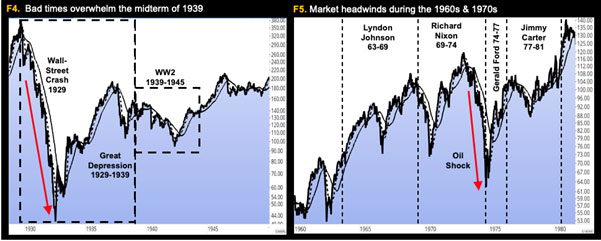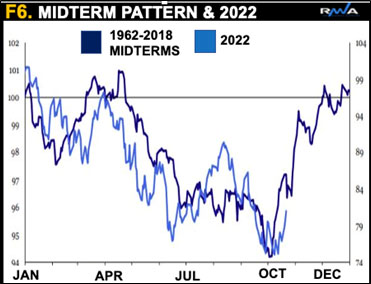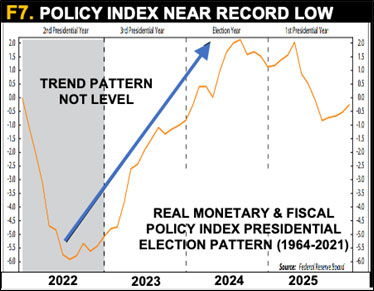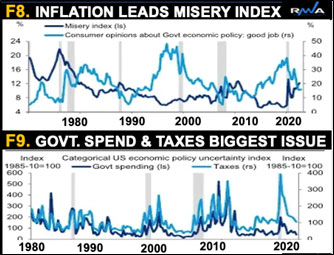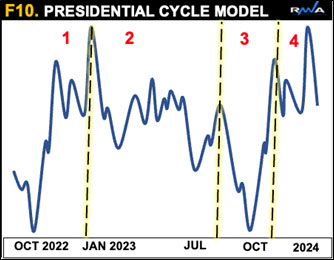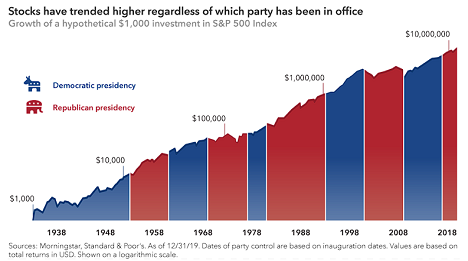
Politics & Portfolios: How Will the Midterms Impact? By Van Tharp Trading Institute
Investment analysts, academic researchers and political scientists have actively investigated potential factors and relationships impacting the economic landscape, market performance and political success. Strategic thinkers blend and triangulate each of these factors to develop a big-picture, multi-dimensional view. Most notably, Austrian-born Harvard professor, Joseph Schumpeter, studied three interrelated macro cycles: the Kondratieff, Juglar and Kitchin (Figure 1). This is part of my own cycle framework, which is featured in my Scenario Planning workshop, offered by VTI.
The latter cycle is a short business cycle of about 40 months, which has now become associated with the US presidential election cycle. And as a result, is taken to have a span of 4 years. Post-midterm election historically leads to the stock market outperforming in the 12-month period afterward, with an average S&P 500 return of 16.3%, with variations in either a bull or bear market cycle (Figure 2).
The bear-case scenario is most likely for the current market setup. Especially now as the S&P 500 bear market rally proxy fails for the fourth time below its declining 200-day average (Figure 3).
Jeremy Grantham offers a subtle explanation for the midterm election impact, based on investors’ unconscious belief that if anything were to happen to derail the stock market in the run-up to an election, the administration and perhaps the Federal Reserve would step in with appropriate measures. Another factor might be policy uncertainty, which often resolves after knowing which political party will hold the majority in Congress.
However, the most important factor is likely the health of the economy and markets. Case in point: The last time the S&P 500 produced negative returns during the 12 months after a midterm election was 1939—a time of tremendous economic contraction and uncertainty as the US battled the Great Depression and World War II began in Europe (Figures 4 & 5). This also explains why negative pre-midterm market returns dominated the 1960s and 1970s, pulling down the overall pre-midterm average. The period of President Lyndon Johnson and Jimmy Carter were marked by stagflation, elevated policy uncertainty and geopolitical tension. Could there be a historical echo rhyme for today’s VUCA (Volatility, Uncertainty, Complexity & Ambiguity) environment?
Meanwhile, the 2022 midterm pattern helped trigger a relief-rally (Figure 6) for a very different reason: gridlock! Polls show the Democrats partially suffered from the so-called “midterm curse” whereby incumbent parties are fated to lose seats, either in the US House or the Senate. This would stall any major legislation and freeze the splurge in spending—a likely positive in the short-term, leading to greater uncertainty later.
Additionally, in previous work I highlighted the combination of monetary and fiscal policy that typically bottoms before midterms and accelerates through the pre-election year. The NDR index of both policy factors is near a record low and may serve as a recent or future contrarian bullish setup (Figure 7). Perhaps the recent Fed policy slowdown, a future pause, or China re-opening finally ahead? Or, an unknown white swan scenario?
Certainly, any welcome change to inflation headwinds or government spend and taxes would help improve voter sentiment (Figures 8 & 9).
Our presidential cycle model (Figure 10) signals a brief upsurge into the new year of 2023 (point 1), followed by a rollover (point 2) as macro headwinds weigh in!

Van Tharp Trading Institute Live Online Workshops Books Home Study Courses Free Resources Blog

